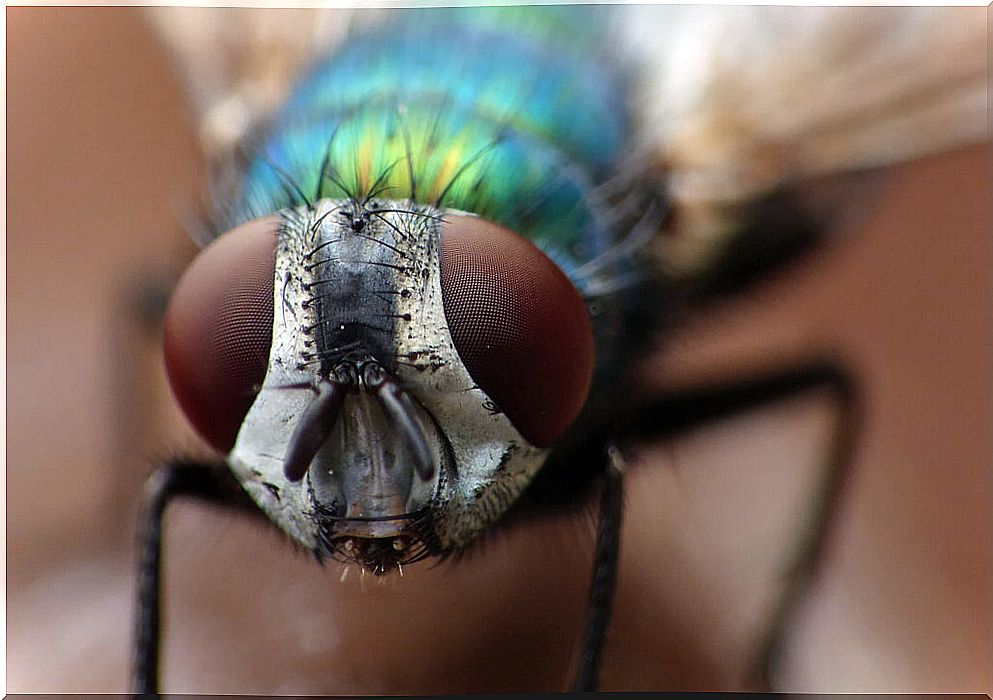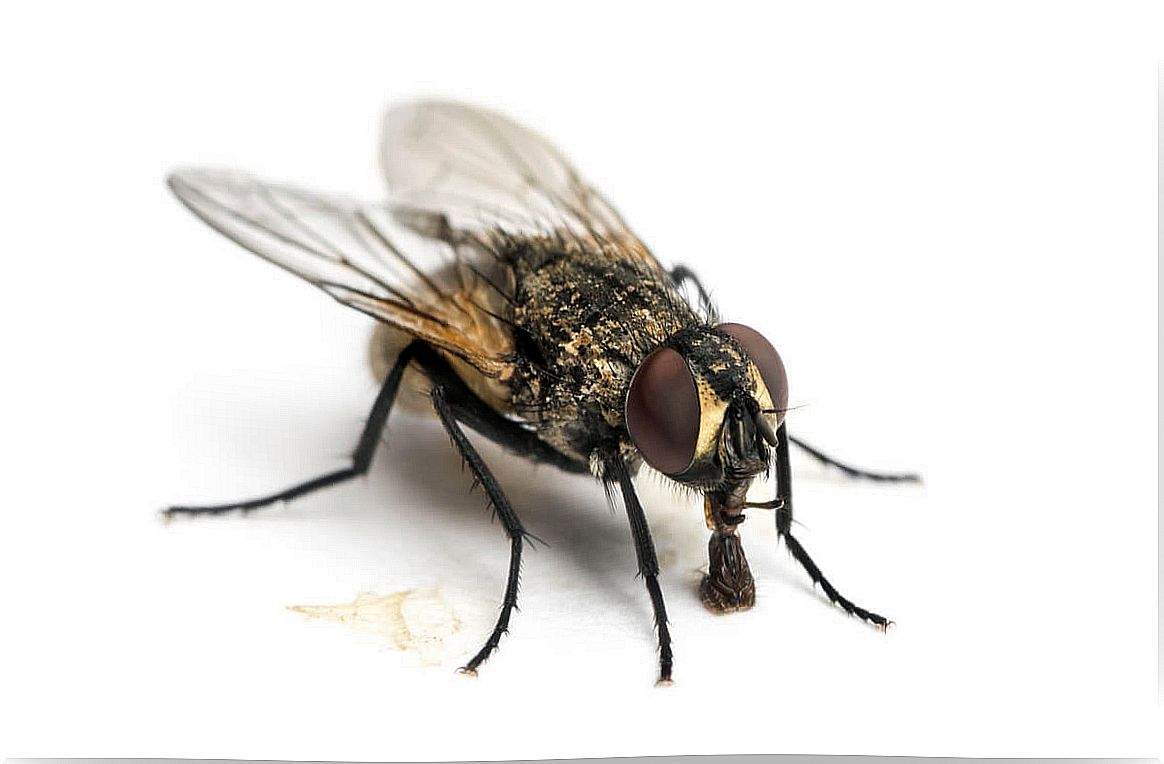How Do Flies See? Amazingly

Whenever a person tries to catch one of these insects, he inevitably asks himself: how do flies see? That this question appears is logical, since their agility far exceeds that of a human being. However, this ability to avoid death has to do with deeper problems.
In this article, you will discover some truly amazing facts about these invertebrates and, most interestingly, how their visual system works. Don’t miss it, because the way the flies see is more surprising than it looks.
Characteristics of flies
Flies are part of the Muscidae family. Their body is divided into tagma – or body segments -: head, thorax and abdomen. Their oral organ, on the other hand, is made up of a series of appendages, which vary according to the diet of each species.
Like good insects, flies have 6 legs inserted into the thorax, with their respective pads. The latter are used to adhere to any surface at any angle.
Additionally, these invertebrates have sensitive filaments all over their body, which allow them to smell and taste the environments they move through. In fact, when flies scurry over your food, they are tasting it, to see if they like it.
Although some species are ovoviviparous, females typically lay eggs near or within decaying organic matter. Flies go through 4 stages in their development: egg, larva, pupa and adult.
These invertebrates are interesting on many levels, but the sight of the flies is clearly one of their strengths. In the following sections, we will explain how flies see.

How flies see: extraordinary eyes
If you’ve ever seen a zoomed-in image of a fly’s eyes, it’s easy to see that they are fragmented. If we are more precise, we can say that these insects have 2 eyes composed of receptive units – called ommatidia – of hexagonal shape. Each unit has a lens (cornea) and a layer of photoreceptor cells, the rods .
In some species, ocelli – simple eyes in the dorsal area of the head – are also associated with sight, responsible only for the perception of different light intensities. Flies don’t have pupils, so they can’t regulate the amount of light reaching the retina.
There are 2 types of compound eyes based on the visual needs of flies. These are as follows:
- Appositional : each ommatidium fixes fragments of an image, which will later be integrated into the fly’s brain. The resolution of the view increases with the size of the animal.
- Overlap : in general, here each ommatidium captures total images of the environment, which overlap when they integrate them.
How do flies see?
Contrary to what it may seem, flies do not have a 360 degree view, but almost. On the other hand, when it comes to sharpness and differentiation of colors and shapes, the eyesight of these insects is not very developed.
Even so, what’s really shocking is their perception of time: according to studies, capturing time slots could be related to the animal’s size and metabolic rate. Flies, compared to humans in this sense, would see time pass much slower.
Flicker fusion rhythm in the vision of flies
To understand how it is possible for time to pass more slowly for flies, it is necessary to know that the subjective perception of time largely depends on the amount of static images reaching the brain. In other words, the more images this organ has to integrate, the longer the film will be, so to speak.
The smaller the animal, the more flashes of images the retina captures per second. Specifically, humans record 60 flashes per second, while flies as many as 250, even 400 in some species.

Flies, so hated for their buzzing, cause humans to delve into transcendental issues such as the passage of time. These insects are living proof that the answers are not only found in stars and large bodies, but that even what seems insignificant to us can ultimately teach us a great deal.









